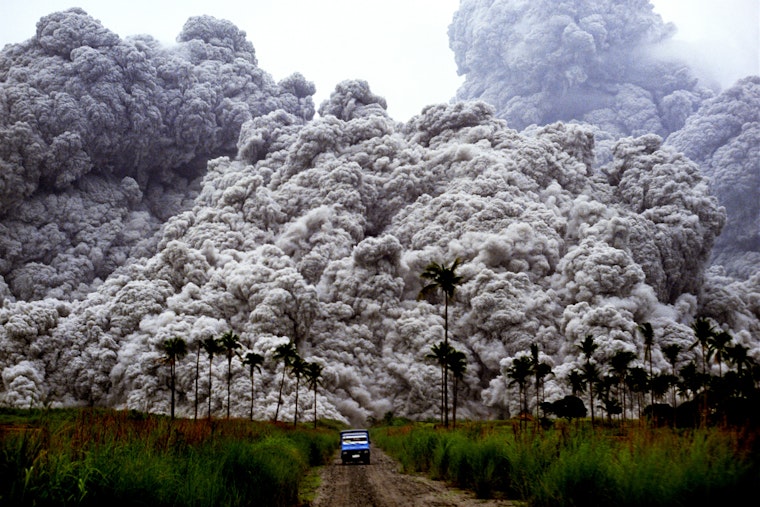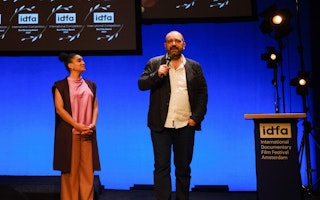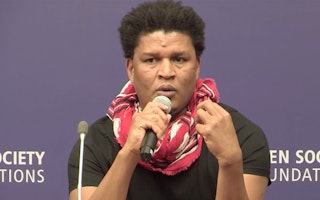Q&A: Visual Witnesses: Photojournalism in a Changing World

Joumana El Zein Khoury is the executive director of the World Press Photo Foundation, a nonprofit organization that champions photojournalism and documentary photography. Founded in the Netherlands in 1955, World Press Photo runs the world’s most prestigious annual contest on visual storytelling and its thematic exhibitions are toured worldwide and seen by millions more online. Among other initiatives, it also provides educational programs for photographers and maintains a vast archive of images documenting significant moments in history. El Zein Khoury spoke to Open Society about World Press Photo’s legacy, its evolving role in photojournalism, the impact of AI on the industry, and efforts to promote diversity and inclusivity in visual storytelling.
How would you introduce World Press Photo?
If you ask ChatGPT what the most important photojournalism and documentary photography contest in the world is, it will say World Press Photo. Our exhibitions are shown to over four million people around the world every year. But I think the most interesting elements of our work are those we do implicitly: setting standards for photojournalism and documentary photography, encouraging visual literacy, and showcasing personal stories to explain universal concepts.
What was the journey that led you to World Press Photo?
I was born in Beirut in 1975 amid the onset of civil war and I grew up in Saudi Arabia, London, Paris, New York, and the Hague. This experience taught me how one’s identity can be shaped by exposure to different cultures, stories, and perspectives. I obtained a master’s degree in Arts Administration from Columbia University, and my photography journey started in 2001 at the Arab Image Foundation, an organization with the mission of creating an archive of the history of the Arab world by Arab photographers. The throughline of my career has been to share storytelling in different forms to showcase the person behind the stereotype.
Does an image still wield the same power it did when World Press Photo was founded in 1955?
Images alone are not enough anymore. In a world of compassion fatigue, they have less shock value. But without photographers risking their lives to bring us images of war, for example, there would be less political pressure to act. World Press Photo has a 70-yearlong perspective on how image-making has evolved and confronted different challenges—from the shift to color from black and white, to the rise of mobile phones. Artificial intelligence (AI) is already transforming photography in terms of new editing tools, but generative AI impacts how viewers trust the images. Some companies are already using AI-generated images for their brand identity, and some areas of photography like sports and nature could see AI taking a much bigger role. The impact of this on press and documentary photography may be that the person behind the lens becomes the “selling point.”
Does AI threaten photojournalism?
It depends on who you ask! One of our previous winners used AI to generate the subjects in his photos and a fake persona online to expose his forgery, which was a great way to explore the topic of misinformation in a creative and engaging way. In 2023 we allowed the limited use of generative AI in our open format category, but subsequently withdrew it after receiving some backlash from the community. Some photographers said AI is an existential threat, others said that they need more time to adapt to it. So, there is concern, but also potential. Thanks to our partnership with one of our sponsors, they are developing a watermark to be embedded in their cameras to prove images are not AI-generated. Everyone is trying to come to terms with how to be authentic while embracing the technology.
World Press Photo will unveil a new exhibition in September for its 70th anniversary entitled “What Have We Done?” What were you inviting audiences to think about?
We gave the opportunity to photographer and curator Cristina de Middel to dive into our archive, a major part of which shows Eurocentric images. Cristina is the recent president of Magnum Photos and moved from photojournalism after observing some downsides in press photography. She identified certain visual patterns that raise very interesting questions, such as those of women weeping, or of men rescuing, or the representation of Black skin. How has this shaped our understanding of gender and race? We don’t aim to offer answers but to share facts and stimulate a dialogue, and we hope that every visitor to the exhibition takes their time to dive into the stories, understand different perspectives, and maybe change their mind on some issues.
Are you observing a culture shift in the photojournalism world?
When I started five years ago, almost 80 percent of World Press Photo winners came from Europe and North America, and around 90 percent were men. Then we launched a new regional strategy to expand our partnerships in Africa, Asia, Europe, North and Central America, South America, and Southeast Asia and Oceania, including the establishment of juries in each of those six regions in the initial selection phase. After just one year, 80 percent of the winners were local photographers and over 30 percent were women. But economic challenges remain—fewer staff photographers mean more freelancers, many of whom have no structure behind them. Our flagship Joop Swart Masterclass is dedicated to giving photographers the tools that they need to survive in this new ecosystem.
The iconic “Napalm Girl” image won the World Press Photo of the Year in 1973, but a recent documentary has stirred up controversy over its provenance. How did you approach this issue?
Our independent investigation agreed with the Associated Press and the filmmakers of “The Stringer” that there is significant doubt over whether Nick Ut took the original image. But rather than take away the award or present it to someone else, we decided to suspend his authorship until further evidence emerges. We thought this was the only fair thing to do in the circumstances, while bringing nuance and encouraging dialogue. It is also interesting how this highlights the issue of power structure—the photo may never have been seen if it wasn't for a bureau chief of AP who was there at the time and showed it to the world.
What are your hopes for World Press Photo on its 100th anniversary?
I hope it will be truly representative of the world as it is, with a fair, balanced, and accurate archive for future generations to delve into. I don’t know what the press will look like by then, but I’m sure it will survive and strive in one form or another.








